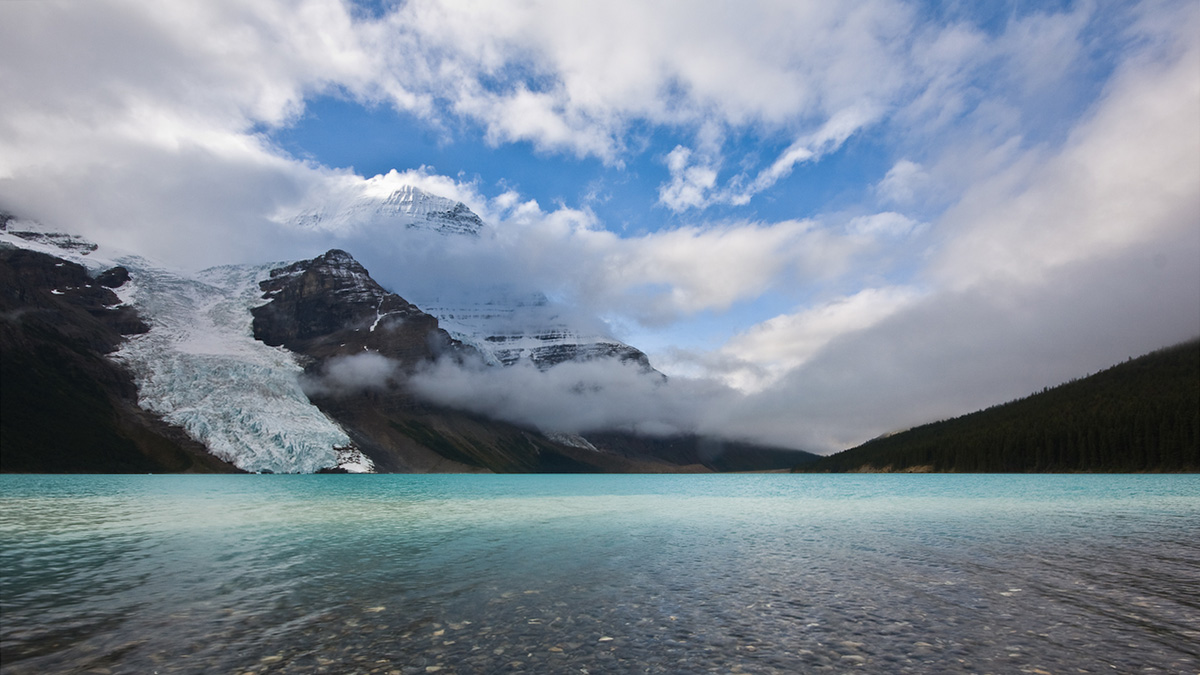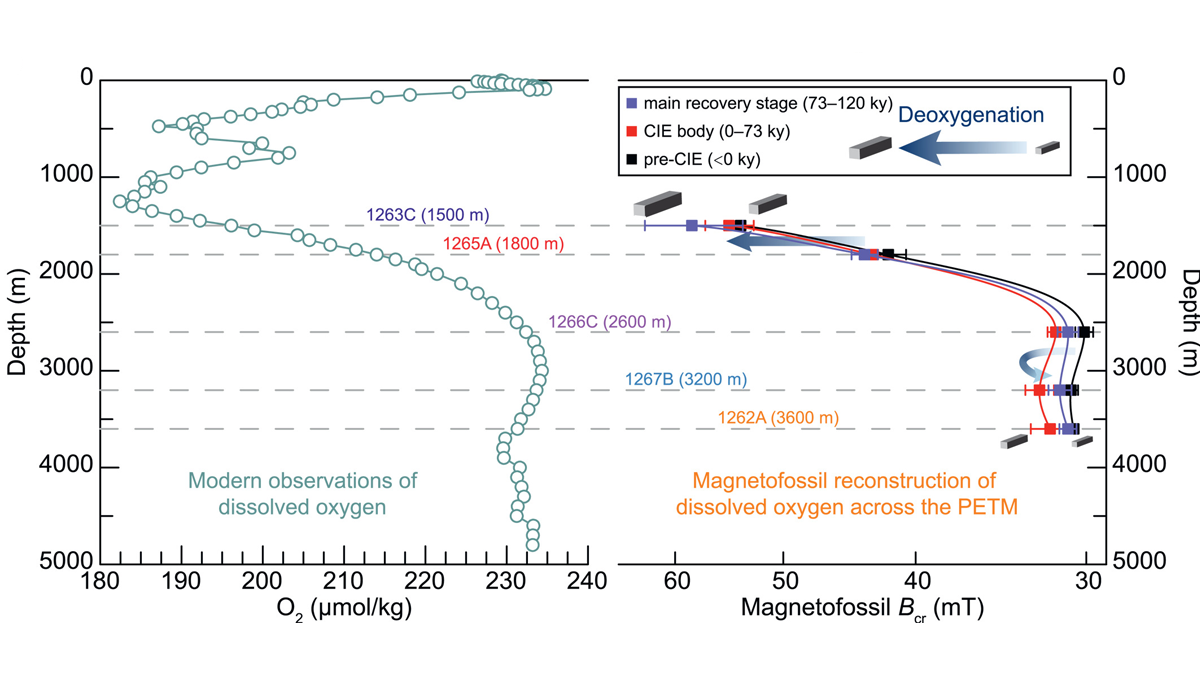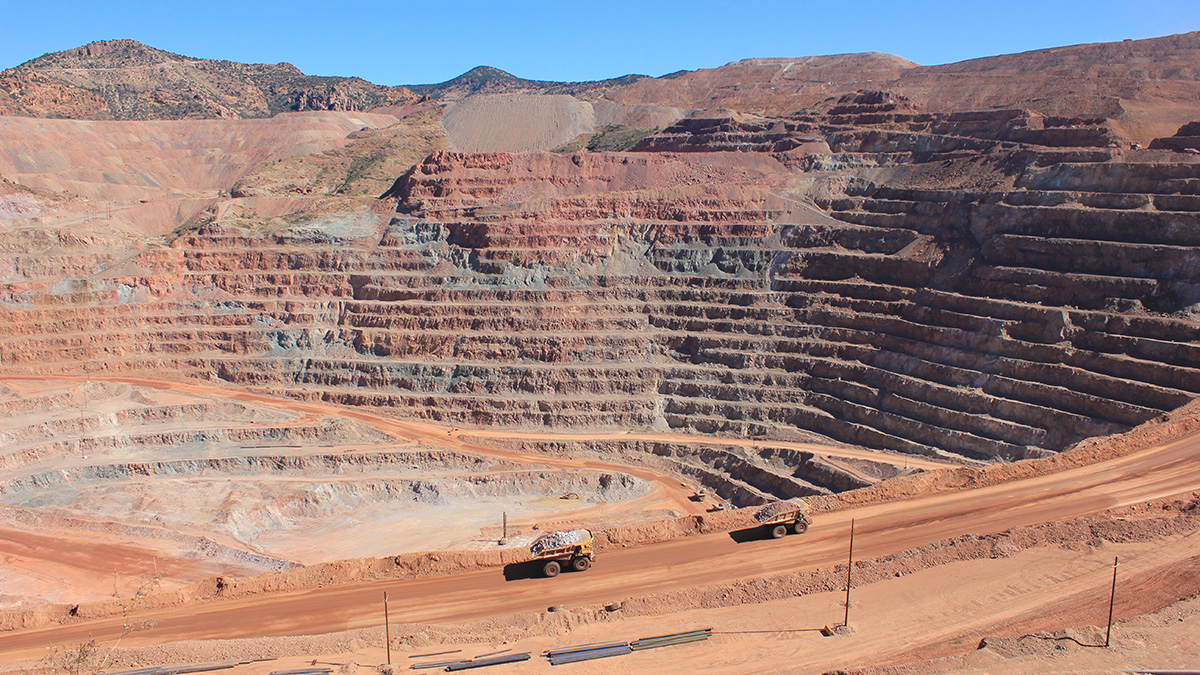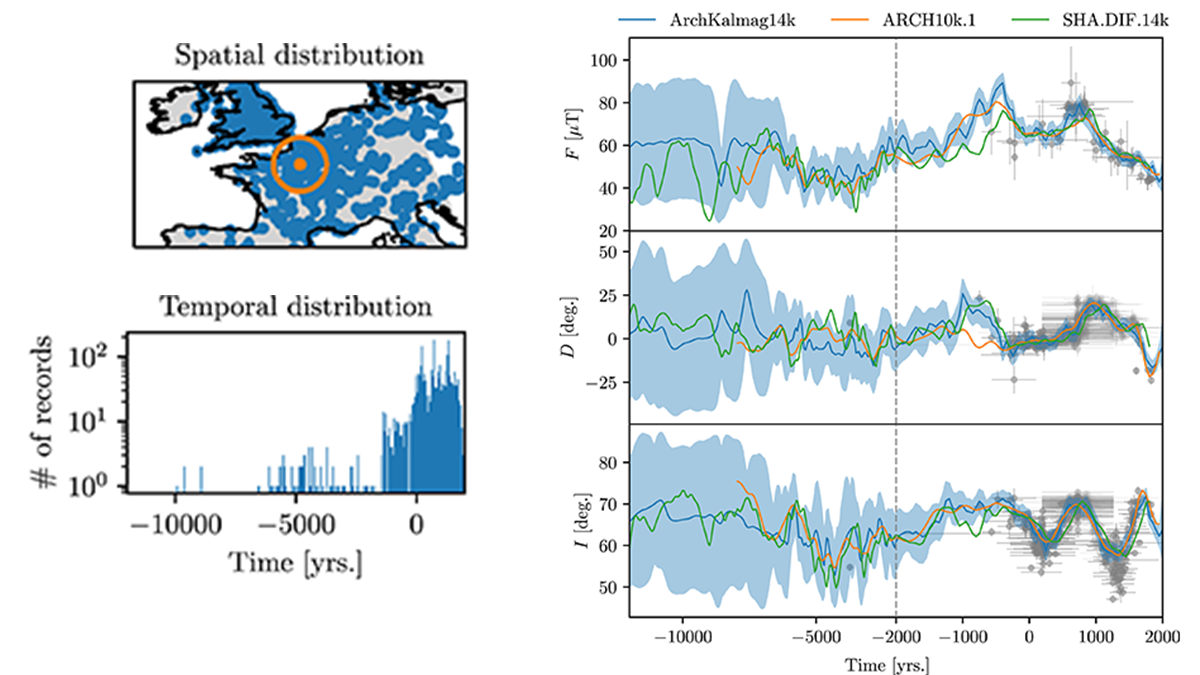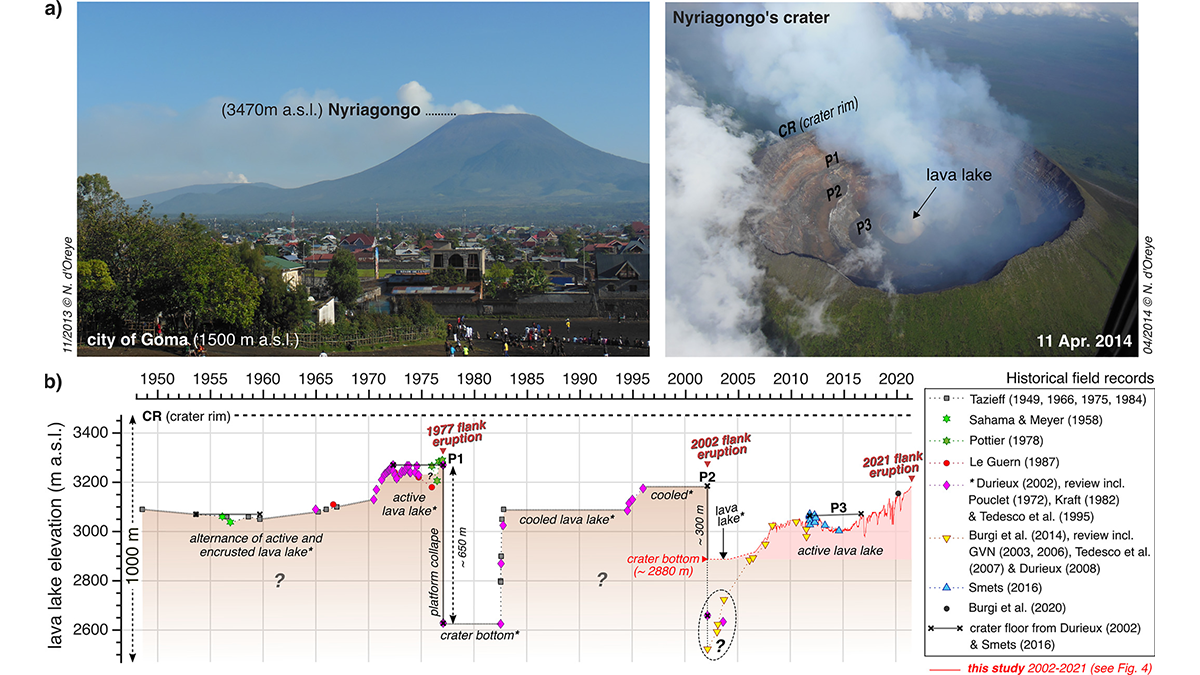The role the deep Earth plays in creating topography is hotly debated. A new study uses subtle elevation changes around the globe as evidence that the mantle plays a key role in building topography.
Journal of Geophysical Research: Solid Earth
Models Oversimplify How Melting Glaciers Deform Land
When glaciers melt, the land below deforms. Sea level data show that widely used models oversimplify the process.
Months of Gravity Changes Preceded the Tōhoku Earthquake
Using GRACE satellite data, researchers discovered anomalous gravimetric signals that occurred before a seismic event that started deep within Earth.
Magnetofossils Unveil Paleoredox Conditions in Extreme Climate
The Paleocene-Eocene Thermal Maximum, a thermal pulse about 56 million years ago, is an analog for future global warming. A new magnetofossil study shows progressive ocean deoxygenation.
Machine Learning Could Revolutionize Mineral Exploration
Using a global data set of zircon trace elements, new research demonstrates the power of machine learning algorithms to accurately identify and locate porphyry copper deposits.
Aftershocks Reveal Coseismic Rupture of Megathrust Earthquakes
More accurate aftershock zones reveal that the rupture areas of megathrust Aleutian–Alaska earthquakes are larger than we thought and partly overlap, in contradiction with the seismic gap hypothesis.
Western US Adjoint Tomography Reproduces Waveform Complexity
Adjoint tomography employing 3D wavefield simulations for 72 well recorded regional earthquakes in the western U.S. yields spectacular improvements to waveform fits.
Volcanic Creation and Destruction of Temporary Tephra Storage
Pyroclastic density currents (PDCs) are a major threat during an explosive volcanic eruption. A new study shows that loose tephra accumulations on volcanic slopes tend to re-mobilize rapidly.
Time-Step Filtering in Holocene Global Magnetic Field Models
Through a local fixed time-step filter, global Holocene magnetic field models remain mathematically tractable refining our insight into field variability and improving archeological dating.
Mesurer les oscillations d’un lac de lave depuis l’espace
Les images satellite permettent de mesurer les oscillations du lac de lave du Nyiragongo (RD Congo). Ces mesures renseignent sur la dynamique du volcan et aident à anticiper ses éruptions futures.


